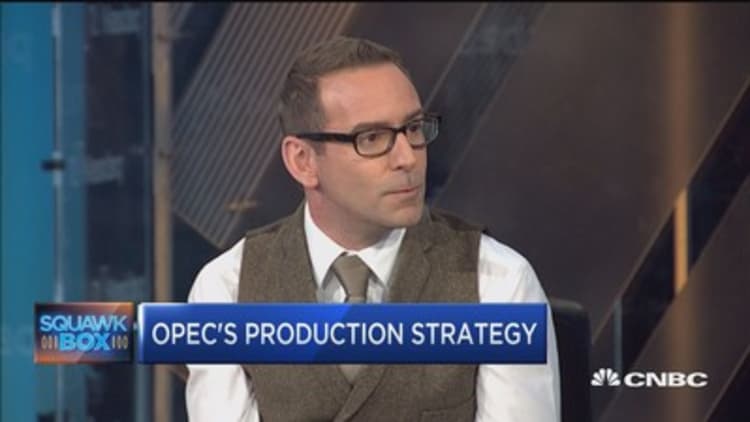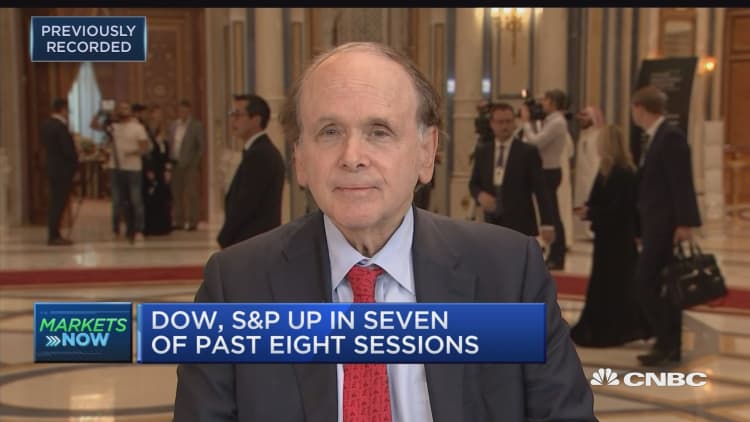Oil prices slipped on Wednesday from four-week highs after a surprising increase in crude inventories. However, the market was underpinned by statements from top exporter Saudi Arabia, which said it was determined to end a three-year supply glut.
U.S. government data showed substantial drawdowns in gasoline and distillate fuel inventories headed into the winter fuel season. That and an increase in U.S. refining output buoyed hopes for a draw in crude inventories in coming weeks.
U.S. West Texas Intermediate crude ended Wednesday's session down 29 cents to $52.18, after closing at a six-month high in the previous session.
Brent crude futures were up 2 cents at $58.35 a barrel by 2:24 p.m. ET (1824 GMT), having closed up 96 cents or 1.7 percent on Tuesday.

The U.S. Energy Information Administration reported that crude inventories rose by 856,000 barrels in the week to Oct. 20. Analysts had expected a decrease of 2.6 million barrels. Production rebounded from a sharp falloff due to Hurricane Nate, and imports rose as well.
However, the EIA data showed gasoline and distillate inventories both fell by more than 5 million barrels, and refinery utilization rates rose 3.3 percentage points.
"Product stocks fell sharply despite higher processing, which points to very robust demand," said Carsten Fritsch, oil analyst at Commerzbank AG in Frankfurt, Germany.
Gasoline and heating oil futures were lower, after initially rising following the EIA report. U.S. RBOB gasoline futures fell 0.3 percent to $1.711 a gallon, while heating oil futures, a proxy for distillates like diesel and fuel oil, dropped 0.8 percent to $1.81 a gallon.
On Tuesday, Saudi Arabian Energy Minister Khalid al-Falih on Tuesday raised the prospect of prolonged output restraint once an OPEC-led pact to cut supplies ends.
Global inventory levels are falling and demand is strong, but Brent has remained below $60 a barrel, partly due to concern the crude glut may grow again after March 2018, when the output reduction deal is due to end.

The Organization of the Petroleum Exporting Countries, Russia and other producers have cut oil output by about 1.8 million barrels per day (bpd). OPEC's next meeting is on Nov. 7 in Vienna, Austria, when they will consider extending the deal.
While other producers cut output, U.S. production rebounded to 9.5 million bpd in the latest week. U.S. crude exports have averaged 1.7 million barrels a day over the past four weeks, highest ever.
"Saudi Arabia's determination to rebalance the market, together with ongoing geopolitical tensions in the Middle East, will remain supportive of oil prices," said Abhishek Kumar, senior energy analyst at Interfax Energy's Global Gas Analytics in London.
"However, rising oil production in the US and persistently high exports from the country will be the key bearish factors."
Disruptions to exports from Iraq, OPEC's second-largest producer, amid tensions between Baghdad and autonomous Iraqi Kurdistan have supported oil. Kurdish authorities on Wednesday offered to suspend their independence drive.

